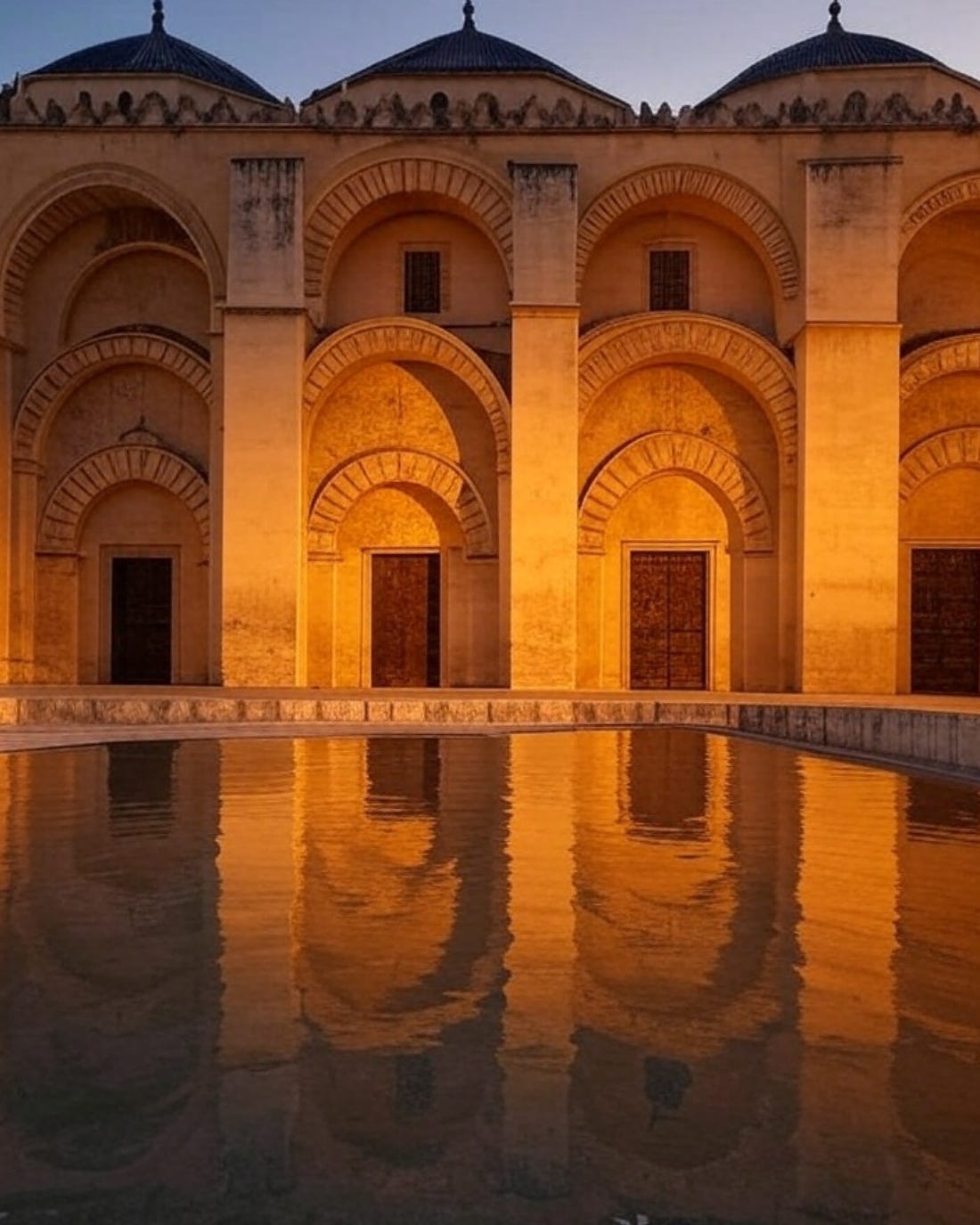The Andalusian Illusion
Why the dream of convivencia hides centuries of domination, persecution, and fear
For many decades, writers, politicians, and even some historians have spoken glowingly of al-Andalus, medieval Muslim Spain, as a “paradise” of tolerance where Muslims, Christians, and Jews lived together in peace and intellectual brilliance. The narrative of convivencia, harmonious coexistence, has proven enduring, not least because it stands as a counter-myth to modern experiences of religious conflict. Specifically, it is often trotted out as ‘Exhibit A’ for the supposed inherent tolerance of Islam.
Unfortunately, this idealised vision is not borne out by the historical record. While there were indeed periods of pragmatic cooperation and cultural flourishing, they were punctuated by episodes of intense persecution, subjugation, and systematic inequality. At every stage, it was clear that Muslims held the dominant position, and Christians and Jews lived as dhimmīs, tolerated but subordinated peoples.
This article will examine the myth of the Andalusian paradise by drawing upon primary sources from across the centuries of Muslim rule in Spain, from the eighth century conquest to the fall of Granada in 1492. These sources will demonstrate both the occasional convivencia and the persistent reality of domination and repression.
The Conquest of Spain: From Visigothic Kingdom to al-Andalus
Muslim armies crossed into Iberia in 711, defeating the Visigothic King Roderic and quickly establishing control over most of the peninsula. Contemporary Muslim chroniclers described the conquest in triumphalist terms. Al-Maqqarī, writing later, quoted the words attributed to the conqueror Ṭāriq ibn Ziyād: “O people! Where can you flee? Behind you is the sea, before you the enemy. You have nothing left but truth and patience.” [1]
For Christians and Jews, the conquest represented the replacement of one ruling class by another, but one that came with a radically different religious framework. Under Islamic law, they were tolerated as ahl al-kitāb (people of the book) but required to pay the jizya poll tax and accept restrictions on public religious practice.
The so-called Pact of Umar, though probably not applied uniformly, outlined the principles of dhimma status: “We shall not build, in our cities or in their neighbourhood, new monasteries, churches, convents, or monks’ cells… We shall not show the cross upon our churches… We shall not teach the Qur’an to our children. We shall not strike a Muslim… We shall not resemble the Muslims in dress.” [2]
Whether or not this pact was formally implemented in Spain, its principles guided the subordinate status of Christians and Jews. The whip hand was always firmly in Muslim control.
The Umayyad Emirate and Caliphate: Tolerance and Tension
The first centuries of Muslim Spain were dominated by the Umayyad dynasty, which established Córdoba as a seat of power and later proclaimed a caliphate in 929. This was a time of cultural splendour. Great mosques, libraries, and palaces testified to Córdoba’s wealth. The Muslim historian Ibn Ḥayyān praised the reign of ʿAbd al-Raḥmān III as one of prosperity and justice.
But even during this “Golden Age,” Christians and Jews lived under constant reminders of subordination. They paid the jizya and were subject to humiliating marks of inferiority. In 850–859, a number of Christians, later known as the Martyrs of Córdoba, openly denounced Muhammad and were executed. Eulogius of Córdoba, who recorded their deaths, lamented: “They declared with unshaken constancy that Muhammad was a false prophet, possessed by demons, and so they triumphed over the enemy by their death.” [3]
The authorities regarded these Christians not as victims but as criminals, guilty of blasphemy against Islam. The executions demonstrate how fragile the supposed tolerance was. When Christians stepped outside the bounds of acceptable behaviour, the state responded with lethal force.
Even Christians who avoided confrontation endured pressures of Arabisation. Many adopted Arabic names and customs, and Latin declined as a written language. Alvarus of Córdoba complained: “My fellow Christians delight in Arabic books, they study the works of Muslim theologians and philosophers… For every one who can write a letter in Latin to a friend, there are thousands who can express themselves elegantly in Arabic.” [4] This was not coexistence as equals but survival under pressure to assimilate.
The Taifa Kingdoms: A Breathing Space for Jews
After the collapse of the Caliphate of Córdoba in the early 11th century, Spain fragmented into smaller taifa kingdoms. These rulers often relied on Christian mercenaries and Jewish administrators to maintain power. For a time, Jewish communities flourished. Samuel ibn Naghrila, a Jewish courtier, became vizier of Granada.
But the fragility of this arrangement is shown by the massacre of 1066. A Muslim mob in Granada stormed the Jewish quarter, killing thousands. The Muslim poet Abu Ishaq incited the violence in a bitter poem: “Do not consider it a breach of faith to kill them; they have violated our covenant with them… They are a plague and a pestilence, a disease upon the body of this nation.” [5]


